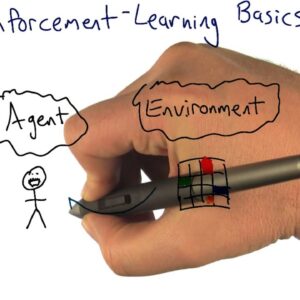Welcome to our comprehensive guide on getting started with reinforcement learning! If you’re interested in machine learning and want to explore a subfield of it, reinforcement learning is a great place to start. In this guide, we’ll cover everything you need to know about reinforcement learning, including its definition, applications, and how to dive into it. So, whether you’re a beginner or an experienced programmer, get ready to learn about the exciting world of reinforcement learning!
Getting Started with Reinforcement Learning: A Comprehensive Guide
Introduction
Reinforcement learning is an exciting and rapidly growing field of artificial intelligence that is being used to solve some of the most challenging problems facing society today. From optimizing complex industrial systems to developing intelligent agents capable of playing complex games like Go and Chess, reinforcement learning algorithms are proving to be powerful tools for building smarter and more efficient systems. If you’re interested in learning more about the world of reinforcement learning and how you can get started with this exciting field, then this comprehensive guide is for you.
What is Reinforcement Learning?
Reinforcement learning is a type of machine learning technique that is used to train intelligent agents to make decisions based on their past experiences. In this approach, an agent interacts with its environment, receiving feedback in the form of rewards or punishments, to learn how to act in order to achieve a specific goal. The key idea behind reinforcement learning is that the agent learns by trial and error, gradually improving its performance over time through experience.
How Does Reinforcement Learning Work?
Reinforcement learning algorithms work by adapting to changing environments. The algorithm collects data about the environment through trial and error and learns which actions produce the most desirable outcomes. In essence, reinforcement learning turns the task of training an AI into a game. Instead of being programmed with a set of rules, the system is allowed to find its own way based on the feedback it receives.
Getting Started with Reinforcement Learning
If you are interested in learning more about reinforcement learning, here are some steps you can take to get started:
- Understand the basics: Start by learning the fundamentals of machine learning, programming languages such as Python and its libraries, and probability theory.
- Learn from experts: Enroll in an online course from experts in the field of reinforcement learning or join an online forum to connect with people that share your interests.
- Build your toolkit: Start building your kit by using open-source tools such as TensorFlow or PyTorch, which are well-suited to reinforcement learning applications.
- Experiment and iterate: Create a project and start experimenting. As you test your model, make necessary adjustments, refine your algorithms and improve model performance.
- Keep up with the latest research: Reinforcement learning is an ever-changing field, so it is essential to stay up-to-date with the latest research and trends.
Conclusion
In conclusion, reinforcement learning is an exciting and rapidly growing field of artificial intelligence that has the potential to transform how we solve some of the most pressing issues facing society today. With the understanding of the basics, learning from the experts, building your toolkit, experimenting, and keeping up with the latest research, you’ll be well on your way to mastering the art of reinforcement learning.
FAQs
- What is the difference between supervised and reinforcement learning?
Supervised learning relies on labeled data to train a model to make predictions based on those labels, while reinforcement learning uses reward signals to train an agent to make decisions for itself.
- What are some real-world applications of reinforcement learning?
Reinforcement learning is used in a variety of applications, including robotics, gaming, natural language processing, and recommendation systems.
- Can reinforcement learning algorithms be trained without human intervention?
Yes, some reinforcement learning algorithms, such as Q-learning, can learn without human intervention.
- What is the role of artificial neural networks in reinforcement learning?
Artificial neural networks are often used to learn the value function in reinforcement learning algorithms, allowing the agent to predict the expected reward for each action.
- Are there any limitations to reinforcement learning?
Reinforcement learning algorithms can be computationally expensive and can take a long time to converge on optimal solutions. Additionally, they may require a lot of data to train effectively.
